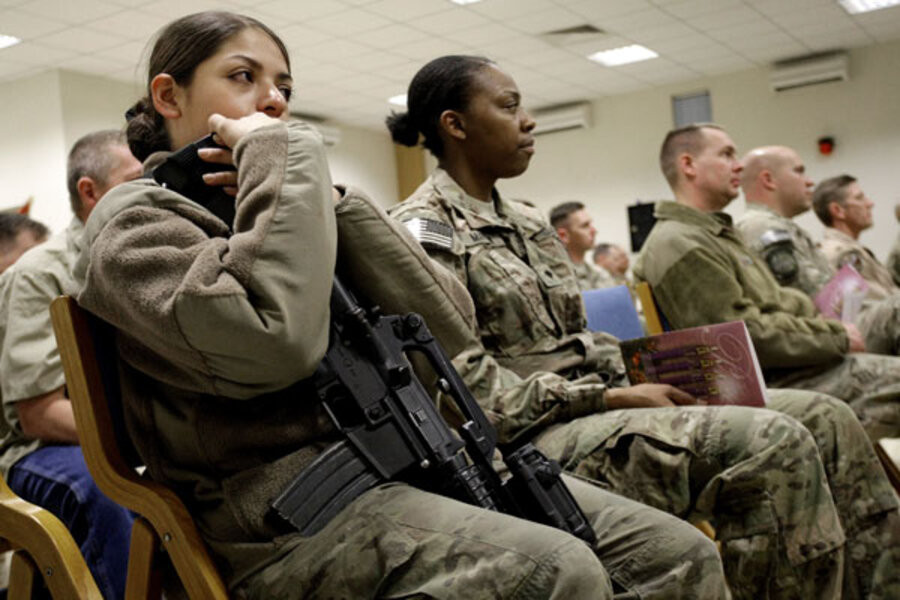Women in combat: Will they have to register for the draft?
Loading...
| Washington
Now that the Pentagon is lifting its ban on women in combat, does this mean that women could potentially be drafted, too?
And as a practical matter: When women turn 18, will they now need to register, as men do, so that they can be conscripted in the event of a World War III, or any military emergency where the US government decides it needs troops quickly?
It’s a thorny question, raising what may be a difficult prospect societally. But the legal implications are obvious, analysts argue.
“The answer to that question is clearly yes,” says Anne Coughlin, a law professor at the University of Virginia School of Law in Charlottesville. “The legal argument is clear: If it comes to that kind of wrenching emergency where we have to press young people into service, there is no legal justification for saying that men alone need to shoulder that burden.”
The wars of the past decade in Iraq and Afghanistan have been fought by an all-volunteer force, since the US military discontinued the draft in 1973. Males between the ages of 18 and 25, however, are still required to register for the Selective Service.
Once the combat exclusion policy is lifted, “My belief is that if we open up combat arms to women, even on a voluntary basis, if there is a draft, we should be able to force women into those positions,” says retired Col. Peter Mansoor, a professor of military history at the Ohio State University in Columbus and a former US Army brigade commander who served two tours in Iraq.
“If women are acceptable to serve in combat, they are acceptable to serve whether they volunteer or not. You can’t have the frosting on the cake and not the cake underneath,” he says.
Legal precedent backs this up, adds Professor Coughlin, who has advised plaintiffs in lawsuits to overturn the Pentagon’s combat exclusion policy – in particular a US Supreme Court case in 1981, Rostker v. Goldberg. In that suit, men argued that the draft is unconstitutional because only men are required by law to register. The Supreme Court rejected the premise of lawsuit.
“The court ruled that the Selective Service process is designed to assemble combat-ready people, and right now women are excluded from combat arms,” Coughlin says. “Therefore they can’t participate in the very thing that the draft is for. Hence, it’s appropriate and constitutional to continue to exclude women from the draft.”
Yet in overturning combat exclusion for women, “The male-only draft falls as well, no question about it,” she adds.
Critics of women in combat argue that culturally, the prospect of women being drafted might make the country reluctant to go to war.
To that, Professor Mansoor says, “It should be: That’s exactly the debate the country needs to have.”
But while the notion of women being drafted “may add some measure of hesitancy to the decision, I don’t see it as swinging the decision,” he says.
Even so, “Congress and the president should agonize over going to war. Questions of war should be difficult,” Mansoor adds. “They should not be as easy as they’ve been in the past 10 years.”







